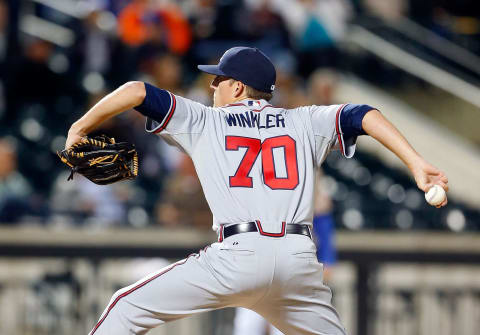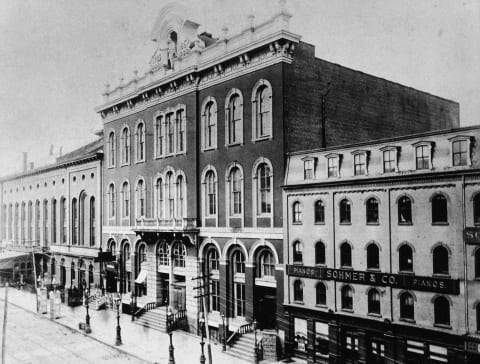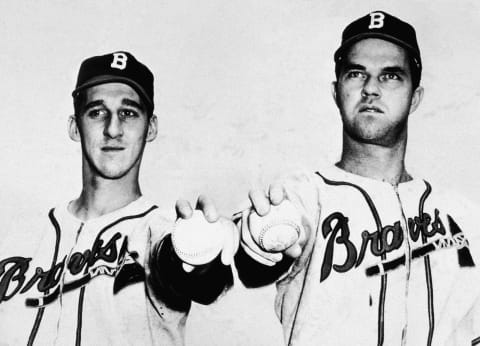Atlanta Braves Q&A: “Is Hank Aaron still the HR King?” and more


As the Atlanta Braves season sits in limbo, we try to halt the onset of insanity by engaging in a Q & A.
At the time of this writing, the Atlanta Braves are only playing games on MLB the Show. At the time of this writing, it’s very late in the night and I keep checking for box scores to pop up. Perhaps it’s just a force of habit.
I don’t have any games to write about, I don’t have any underlying storylines to discuss, no “what’s wrong with this guy?” articles. So, I decided to run a question and answer session. The problem with that is I’d have to seriously interact with a bunch of humans, so I used my alter ego, Daniel Druff to provide the inquiries.
So, yes, I’m doing a Q&A about Braves baseball in which I both ask the questions and answer them as two different people.
Yes, I’m losing my mind.
Bunting is Easy?
Daniel Druff: Why is a batter out if he bunts a foul ball with two strikes?
Seth: Great question Daniel! The reason you are out if you bunt foul with two strikes is to protect the pitchers. Since bunting is supposed to be a much easier method of making contact, hitters could theoretically bunt a foul 100 times in a row causing the pitcher to tire and exit the game.
Daniel Druff: Does bunting really make it easier to make contact with the ball?
Seth: Well sure, it must be! Bunting is so easy Dan Winkler can do it…with his eyes closed.
Quote of the Day
“Trying to sneak a fastball past Hank Aaron is like trying to sneak the sunrise past a rooster.” –Joe Adcock

What’s in a Name?
Daniel Druff: Where did the Braves get their name?
Seth: The franchise originated in Boston as the Red Stockings. That’s right, our boys are the original Boston Red Stockings. They changed names several times before settling on the Braves in 1912. Owner James Gaffney belonged to the famed New York City political machine, Tammany Hall. The society was named after a Native-American chief named Tamamend.
While Tammany Hall no longer exists, the symbol of the legendary Chief Tamamend lives on with the Braves. Although, like the Cleveland Indians, teams using the imagery of Native Americans for their logos have come under scrutiny in recent years.
Daniel Druff: You never want to discriminate or alienate certain groups.
Seth: That’s right, Daniel. You always have to be mindful of other people’s feelings. In fact, the Tampa Bay Rays began as the Devil Rays in 1998 to honor the large native devil ray population in the area. Some thought this was an unfair discrimination against the equally as large manta ray population, so the team came up with a more inclusive name.
Daniel Druff: Oh, that’s nice. Now they represent all rays instead of just one kind.
Hammerin’ Hank Still the Home Run King?
Daniel Druff: Is Hank Aaron still the home run king?
Seth: Daniel, thank you for that terrible question! In the eyes of many Braves’ fans, he’ll always be the home run king, although Barry Bonds is the statistical leader for individual career home runs. We have a fun way of still technically claiming the crown of the home run king for good ole’ Hammerin’ Hank. Aaron and his brother Tommie are the sibling home run kings. The Aaron boys combined to hit the most homers in major league history by siblings. Hank hit 755 while his brother Tommie walloped 13. Good job guys!

1946 – Braves Get a Fresh Coat of Paint
Seth: Daniel, your last question was so terrible that I’m just going to end this with one fun story about the Braves.
In 1946, the Braves introduced the tomahawk to their jerseys, which is still prominently displayed and it is still as beautiful as a Georgia sunrise, as invigorating as fresh coffee on a spring morning, or as hope-inspiring as when the Marlins’ bus rolls into town.
1946 was the franchise’s 76th season. The Braves spent about $500,000 (approximately $23 trillion by today’s standards*) renovating and updating the stadium that offseason. The final touch included a fresh coat of green paint to the grandstand seats.
The work paid off as the Braves increased their attendance from 374,00 fans in 1945 to nearly a million in 1946.
The enthusiasm rubbed off on the fans metaphorically and literally… the paint was still wet. Fans were enraged, as going to the ballpark in those days was an occasion to dress up for (what wasn’t?) and their nice clothes were ruined – unless they were already green. The Braves took out an ad in the paper apologizing for the incident and offered to pay for cleaning costs.
There was a lot of whining at the Wigwam that day.
Daniel Druff: The Wigwam?
Seth: Yes, can you believe that? They used to call Braves Field in Boston the Wigwam.
Daniel Druff: That sounds very insensitive to bald guys…
dark. Next. Chatting with Chase d'Arnaud
That’s enough fun for today. As you can tell, I really miss baseball and I may be losing my mind. Stay clean, stay healthy, don’t talk to yourself too much, and keep chopping!
*False